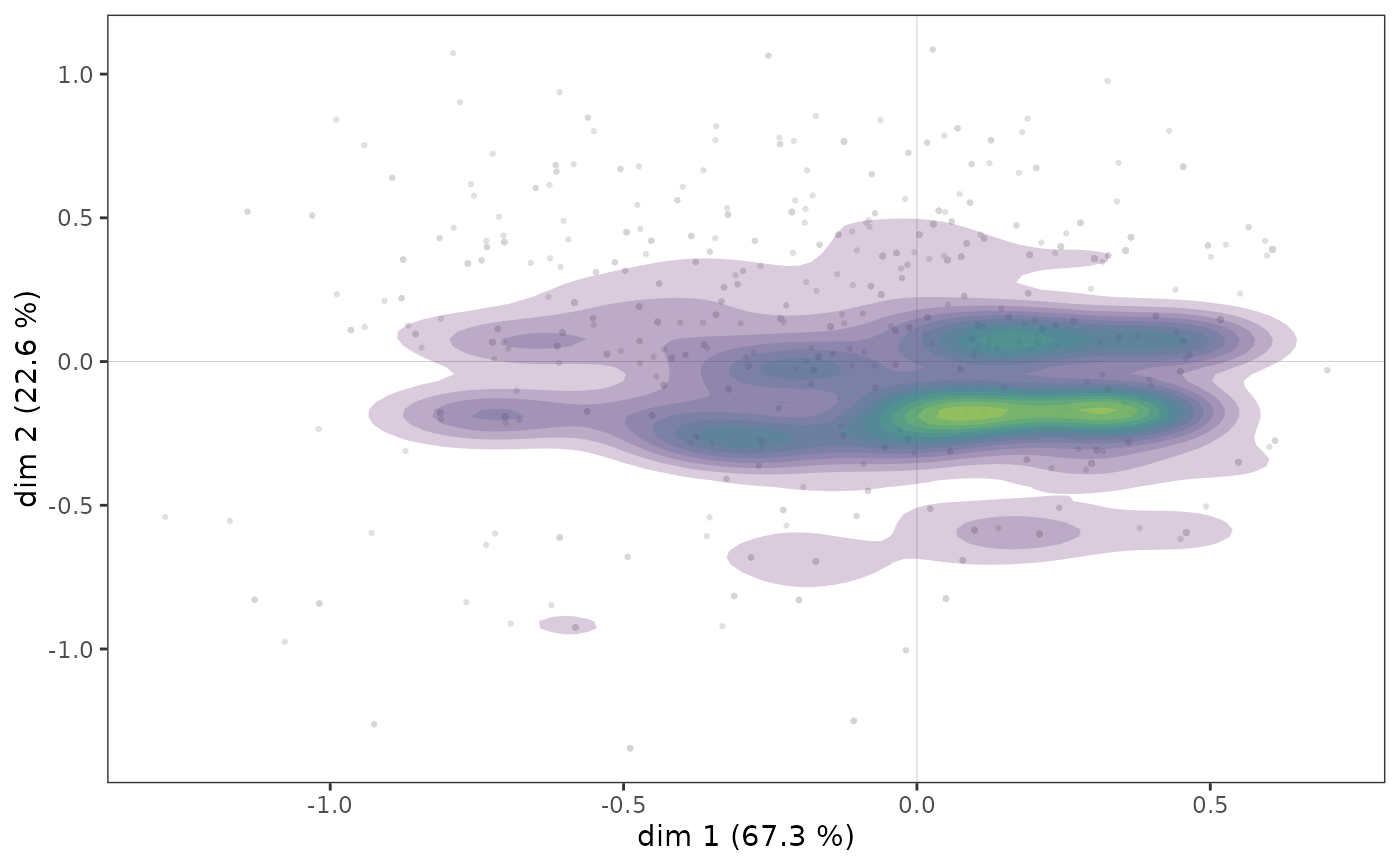Density plot of a supplementary variable
ggadd_density.RdFor a given category of a supplementary variable, adds a layer representing the density of points to the cloud of individuals, either with contours or areas.
Arguments
- p
ggplot2object with the cloud of variables- resmca
object created with
MCA,speMCA,csMCA,wcMCA,bcMCA,stMCAormultiMCAfunction- var
factor or numerical vector. The supplementary variable to be plotted.
- cat
character string. The category of
varto plot (by default, the first level ofvaris plotted). Only used if var is a factor.- axes
numeric vector of length 2, specifying the components (axes) to plot. Default is c(1,2).
- density
If "contour" (default), density is plotted with contours. If "area", density is plotted with areas.
- col.contour
character string. The color of the contours.
- pal.area
character string. The name of a viridis palette for areas.
- alpha.area
numeric. Transparency of the areas. Default is 0.2.
- ellipse
logical. If TRUE, a concentration ellipse is added.
Value
a ggplot2 object
References
Le Roux B. and Rouanet H., Multiple Correspondence Analysis, SAGE, Series: Quantitative Applications in the Social Sciences, Volume 163, CA:Thousand Oaks (2010).
Le Roux B. and Rouanet H., Geometric Data Analysis: From Correspondence Analysis to Stuctured Data Analysis, Kluwer Academic Publishers, Dordrecht (June 2004).
See also
Examples
# specific MCA of Taste example data set
data(Taste)
junk <- c("FrenchPop.NA", "Rap.NA", "Rock.NA", "Jazz.NA", "Classical.NA",
"Comedy.NA", "Crime.NA", "Animation.NA", "SciFi.NA", "Love.NA",
"Musical.NA")
mca <- speMCA(Taste[,1:11], excl = junk)
p <- ggcloud_indiv(mca, col='lightgrey')
# density plot for Age = 50+ (with contours)
ggadd_density(p, mca, var = Taste$Age, cat = "50+")
 # density plot for Age = 50+ (with contours)
ggadd_density(p, mca, var = Taste$Age, cat = "50+", density = "area")
# density plot for Age = 50+ (with contours)
ggadd_density(p, mca, var = Taste$Age, cat = "50+", density = "area")
